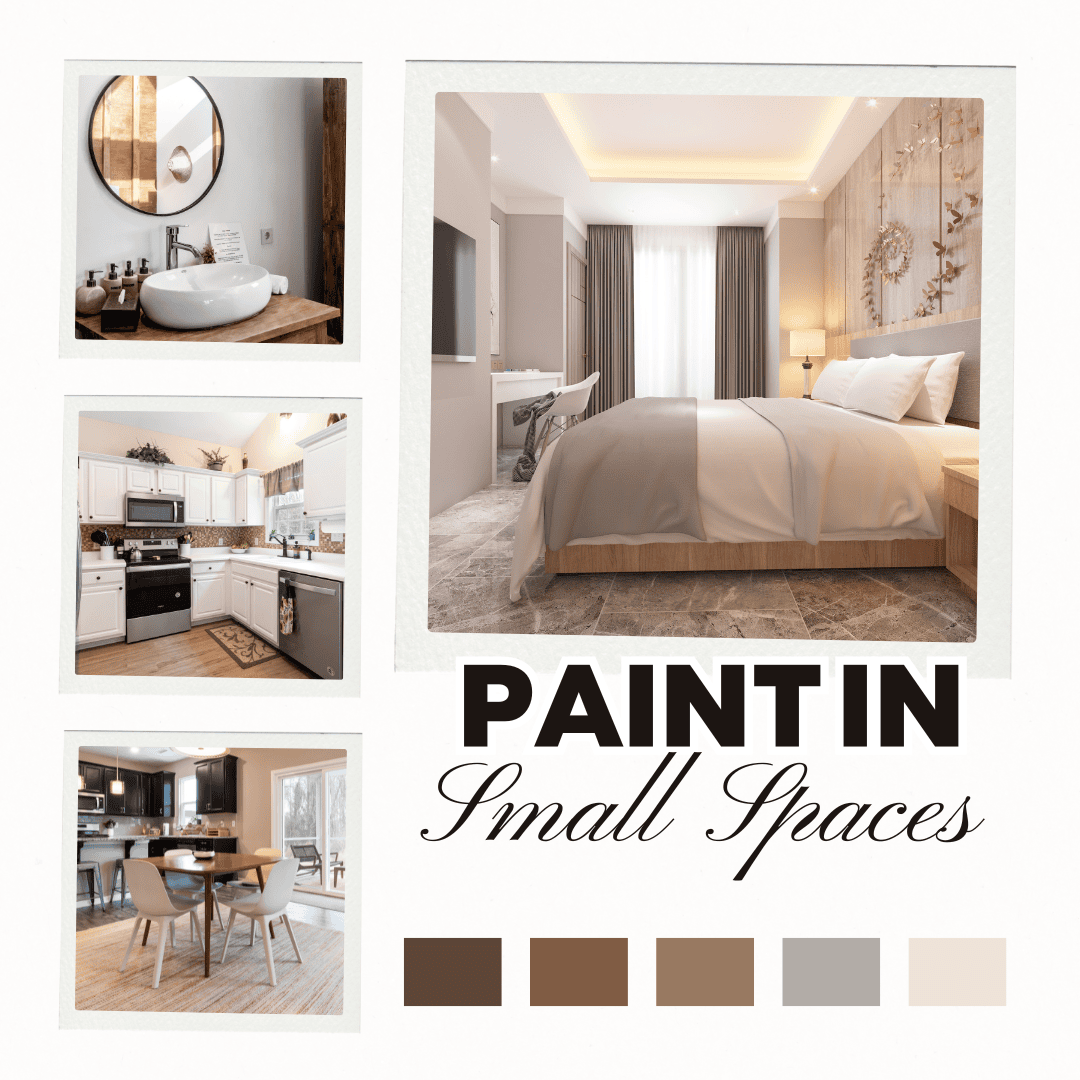
03 Oct How to Choose the Best Paint Colors for Small Spaces
Selecting a paint color for a small room can be challenging. The right paint color can affect how a room feels. With strategic color choices, you can make a small area appear larger and more inviting.
Here are some of our tips to guide your selection process:
1. The Influence of Colors
Opt for cooler colors like soft whites, pale blues, and light grays if you want the space to feel lighter and brighter. These hues can create the illusion of openness. They reflect natural and artificial lights, making a room feel more spacious.
If you prefer to create a cozy space and divert the focus to the room’s contents, opt for dark, rich colors that absorb light and make the space feel contained. (Dark wall colors also tend to recede into the background, allowing the other items in the room to become the focus.) Dark colors work best in a study, powder room, or bedroom, creating a cozy ambiance. For elegant results, opt for “color bathing.” Paint the entire room – from ceilings to walls to trim molding in one color.
2. Monochromatic Color Schemes
Using different shades of the same color throughout a small space creates a sense of cohesion, calm, and continuity. This design approach helps eliminate visual boundaries, making the room appear larger. For example, pairing a soft gray wall with slightly darker gray accents or ceilings maintains harmony and prevents the space from feeling broken up.
3. Consider Cool Tones
Cool tones, such as blues, greens, and lavenders, tend to recede visually, making walls feel farther away—similar to how dark colors also recede. This trick can be particularly effective in bedrooms or living rooms where you want a calming and expansive effect.
4. Use Glossy Finishes Strategically
While matte finishes are more forgiving, a high-gloss or satin finish can reflect light and add depth to a small room. Consider using a glossy finish on ceilings or accent walls to give the space a subtle lift without overwhelming it.
5. Add a Feature Wall
A feature or accent wall in a bold yet complementary color can create a focal point without shrinking the space. Choose a wall with minimal furniture and decor to draw attention while maintaining openness. Be strategic when selecting an accent wall, as it will be the focal wall.
6. Don’t Forget the Ceiling
A light-colored (lightly tinted) or wallpapered ceiling can elevate the perceived height of the room. It draws the eye upward, making the space feel taller and airier.
By carefully selecting colors and finishes, you can transform small rooms into welcoming, airy spaces that feel much larger than they are. Please contact us at Home Works Painting if we can serve your next paint project. We would love to collaborate with you to transform your home.












Sorry, the comment form is closed at this time.